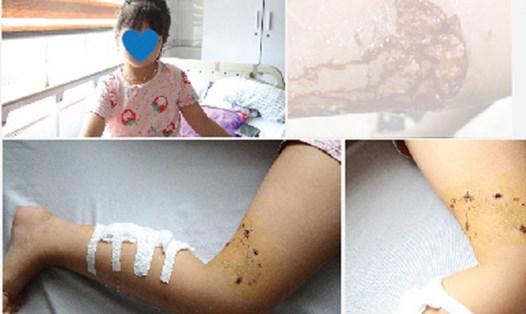On February 18, the child began to show signs of swelling in the right eye area, with a mild fever of 38.2°C, difficulty breathing, nausea and fear of light.
The family thought this was just a common cold symptom so they did not take the child to the doctor. The next day, the swelling spread from the forehead to the entire right temple. On the morning of February 20, the child showed signs of disturbances in consciousness and lost his sight, so the family immediately took him to the hospital.
The results of the chest and brain CT scan showed brain damage. The child was transferred to the Central Hospital for Tropical Diseases for further treatment.
The child was admitted to the hospital with respiratory failure, low blood pressure, and severe metabolic failure. The child was diagnosed with toxic shock caused by Staphylococcus aureus yellow plaque bacteria and transferred to the Intensive Care Unit. Here, the child was given a ventilator and continuous blood filtration. The blood culture result was positive for yellow plaque bacteria.
Doctor Nguyen Thi Huan - Intensive Care Center said: "Through clinical examination, the doctor discovered that the right face of the child had many acne points that had been treated with unknown drugs, inflammation spread to the entire face and eye branch. The child had a rapidly progressive septic shock. The results of the CT scan of the skull showed cerebral edema, chest CT showed many scattered nodules in the two lungs. Symptoms consistent with the diagnosis of congestion of yellow blood cell toxicity. However, the patient's response to the drug was very poor, causing the septic shock to become more and more serious. The prognosis is very bad".
Staphylococcus aureus is a type of bacteria that can exist in the nasal cavity and on the skin of about 30% of healthy people without causing harm. However, under favorable conditions, this bacteria can In originate, develop and cause dangerous diseases, even life-threatening. People with underlying diseases, weakened immune systems or young children are at high risk. In particular, in puberty, acne is more common, creating favorable conditions for bacteria to penetrate through skin damage.





